Milled Vs. Insert Putters: Which One to Choose and Why?
Depending on face construction, there are two types of putters: those with a milled face and those with some insert in the face. But there is a question of what exactly the difference is and which option is better: milled vs. insert putters.
Milled putters come with a milled pattern on the clubface where the design attempts to produce firmer sound. In contrast, insert putters include a soft insert which is some synthetic material or aluminum or even rubber designed to soften the sound.
But if you really want to know which one will suit your game, there are many things to know about. So, in this blog post, we will get an in depth discussion on milled and insert putters. However, let’s get into it.
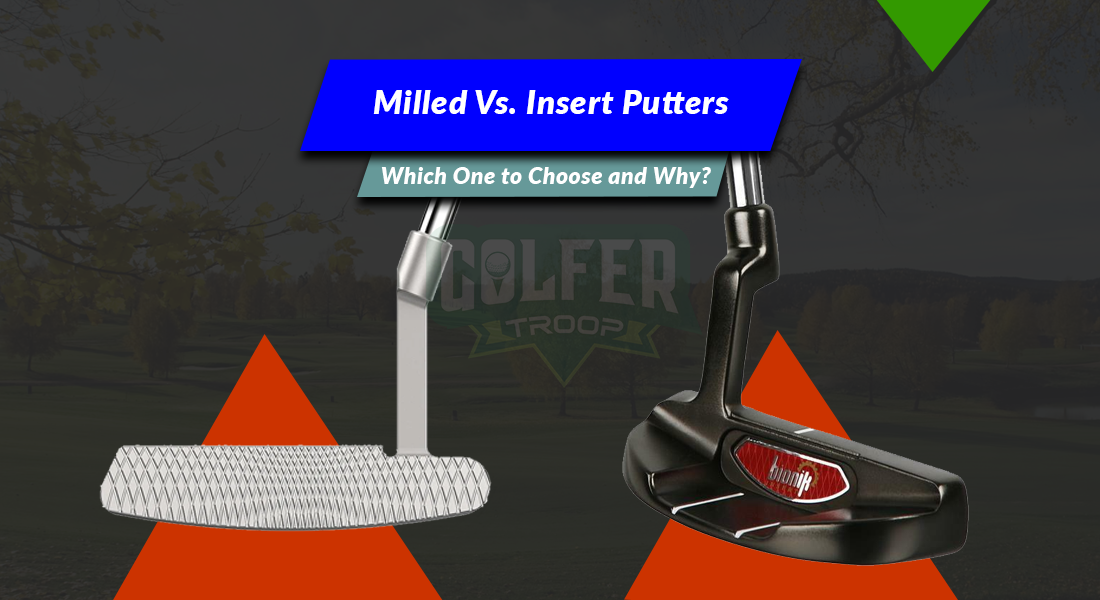
Overview Of Milled Putters
Milled putters are made of a process called Computer Numerical Control (CNC) milling. In this process, the putter is milled out of a single piece of aluminum, carbon steel or sometimes titanium too.
One of the best benefits of a milled putter is that it allows a golfer to get more sound feedback. Therefore, this type of putter provides a sharper and louder sound while hitting a ball.
They also give more consistency and longevity. Moreover, they are long lasting putters as they are made of high-quality metals.
A putter with a milled face is also easier to play with a harder ball. But the milled putters are a little expensive too as they use CNC milling technology which is expensive too.
Overview Of Insert Putters
A putter with an insert face uses different types of insert materials such as plastic, or even rubber. These materials are injected inside the head of the club to improve the feel and sound.
The best thing about insert putters is that they can provide a softer feel and sound with harder balls. They can also give a consistent roll.
Therefore, the insert putters have a High Moment of Inertia (MOI). So, they are more forgiving too. Unlike milled putters, insert putters are relatively affordable to buy.
Milled Vs Insert Putters: Quick Comparison Table
While choosing any one between a milled putter and an insert putter, it’s necessary to know about the difference between their features.
So, here’s a quick comparison table to have a better and more clear idea about their features:
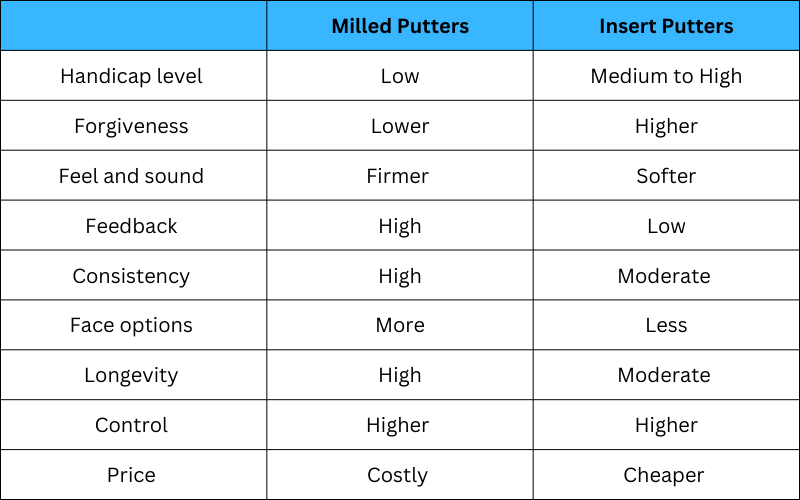
What Are The Differences Between Milled and Insert Putters?
The difference between milled and insert putters is not so in their design and construction but rather in sound and feel.
As both of these putters are produced from different materials, it impacts their feel and sound quality.
But still there are a few differences between their forgiveness, feedback, materials, price and design too. So, let’s see what they actually mean.
Materials
As we discussed earlier, the milled putters are made from a brick of heavier and stronger materials like aluminum, titanium, and carbon steel. In contrast, the insert putters are made of polymer, plastic, or rubber type materials.
These materials can easily wear out within a short period of time and need to be replaced. On the other hand, milled putters are very effective, long-lasting and use protective materials.
Design
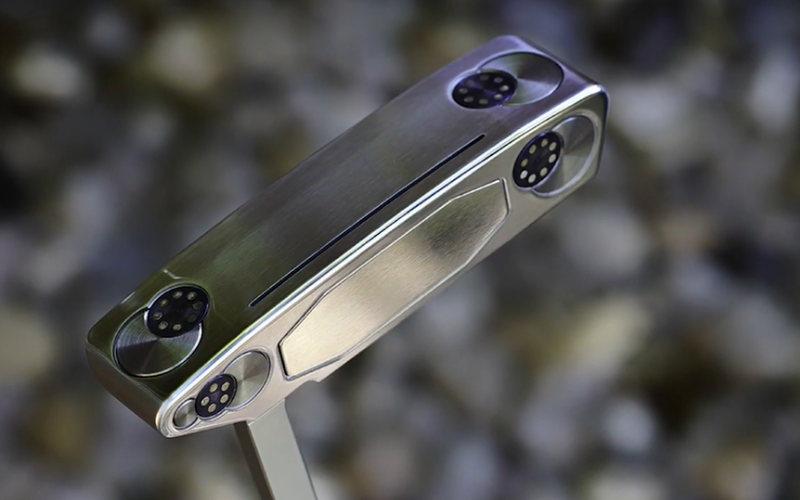
Both insert and milled putters are made to help golfers to improve their putting stroke. So, they have the same basic design and shape.
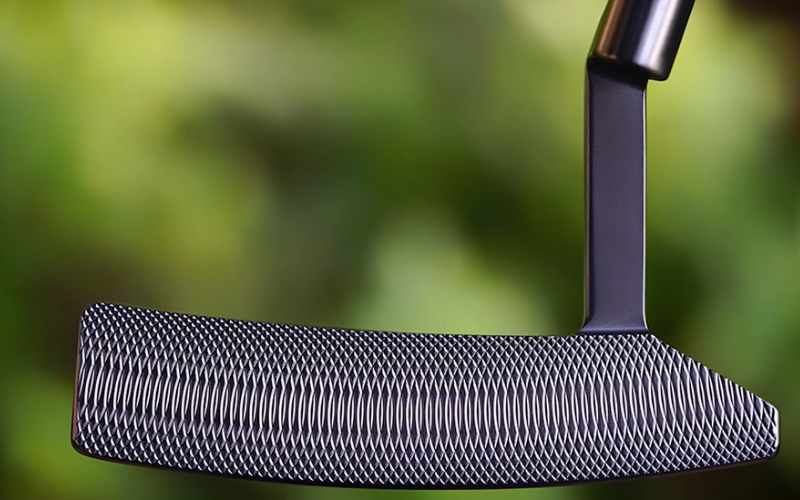
But if it is to say specifically, the milled putters have more face options than the insert putters.
They come in trapezoid, wedge, and V-shaped faces. The milled putters also have a larger surface area than the insert putters.
Forgiveness
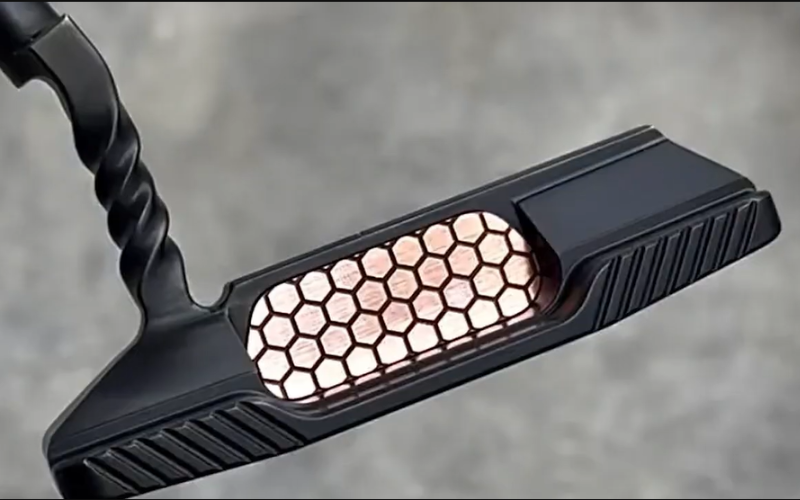
In terms of forgiveness, insert putters are more forgiving than milled putters. Because, an insert putter uses a non-metal insert in the face which is very light weight.
It helps to redistribute the weight in the heel and toe of the putter. Thus, it increases the Moment of Inertia (MOI) and forgiveness while putting a ball with that putter.
But the milled putters don’t use any kind of extra material to lessen the weight. As a result, the MOI can not be increased and the forgiveness is slightly lower than the insert putters.
Feel and Sound
Insert putters have a softer feel and sound, while the milled putters provide a firmer feel and louder sound.
As we already know, the insert putters use some soft materials to soften the feel while putting with a hard ball.
On the other hand, the milled putters are made from heavy metals that create sharper sound and deliver a firmer feel than insert putters.
Feedback
In terms of feedback, milled putters are far better than insert putters. As the milled putters are made of a single piece of metal, it can create some different sounds when the player misses the sweet spot.
Thus, it can deliver clear feedback of each and every stroke of the player and give a better idea how he should strike the ball.
Price
When it comes to price, the milled putters are more expensive than insert putters. A milled putter will cost anywhere from $500 to $1000, while an insert putter is priced between $100 and $300.
The main reason why a milled face putter is so expensive is it uses more costly and heavy materials.
It also needs a CNC milling machine to milled out the putter. This machine is also very costly and takes more labor time to make a milled putter.
Milled or Insert Putters: Which one To choose?
Milled face putters will work better for the low-handicap golfers. Because they are more consistent in rolling, and deliver firmer sound and high-end feel.
Moreover, they are long-lasting and provide excellent feedback. So, the expert and perfectionist golfers mostly prefer this type of putter.
In contrast, the insert putters are more preferable for mid to high handicap players. They are more forgiving, softer and more light-weight. These qualities make them more suitable for the amateur golfers.
Therefore, the insert face putters are cheaper than the milled face putters. So, if you prefer a cheaper one, then you can go with an insert putter.
But a milled putter is also worth money. Because they are very stable and long-lasting.
FAQs.
Now we know the main differences between milled and insert putters. Is there anything left to know more about these putters? If it is, here are the things you should know:
Is a milled putter better than an insert putter for faster greens?
Yes, a milled putter works better for faster greens than an insert putter. It is because the milled putters are the putters with a heavier putter head. It helps the golfer to slow down his/her stroke on the fast green more effectively.
Are milled and insert putters beginner-friendly clubs?
Insert putters are the beginner-friendly clubs, while the milled putters are for the experts.
They have excellent forgiveness and tend to provide a softer feel and sound against the ball. These putters are also easier to put the ball.
Which is better: milled or insert putter?
Milled putters are heavier than the insert putters. So, the milled face putters are better to swing smoothly, while the insert putters are easier and better in dealing with distances.
Is an insert putter the easiest putter to hit straight?
Yes, an insert putter will be the easiest one to hit the ball straight. But you will have to sacrifice the distance. Because, you won’t get longer distances with an insert putter.
Which is more accurate between insert and milled putters?
Milled putters are more accurate than insert putters. Experience says that the heavier putters are more accurate than the lighter putters.
So, as the milled putters have heavier club faces, it helps to provide more accurate strokes while putting on the ground.
Conclusion
From all these discussions, we can say that milled vs insert putters: which one you should choose will ultimately depend on your personal preference.
So, it’s better to experiment both of them and discover which suits you better. But remember one thing that the insert putters tend to wear out and crack over time.
In this case, you will need to replace the insert face. If you find you are struggling with the control over the distance, then it’s time to change the insert face of your putter.
- Read Also: Scotty Cameron 009 Vs. Newport: Which Golf Putter to Choose?
- Read Also: Scotty Cameron Newport Vs Newport 2 | Comparing Golf Putter
- Read Also: Ping Anser 2 Vs 4: Find the Perfect Golf Putter for You
- Read Also: TaylorMade Spider Tour vs. Spider X: Which Putter is Better?
- Read Also: Newport 2 Vs 2.5: Which Golf Putter Should You Choose?
- Read Also: Single Bend Vs. Double Bend Putter: Ultimate Comparison
Meet Jalal, a passionate golf writer and the driving force behind Golfertroop.com, your go-to destination for all things golfing! Whether you’re a seasoned golfing veteran or a beginner taking your first swing, Jalal is here to assist you in making the most out of your golfing experience.

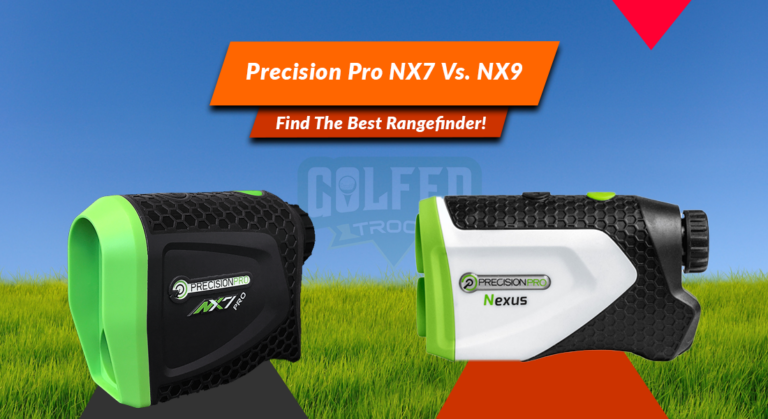
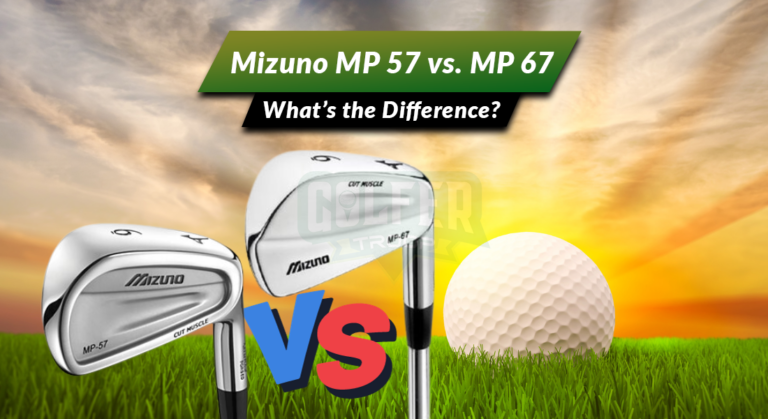

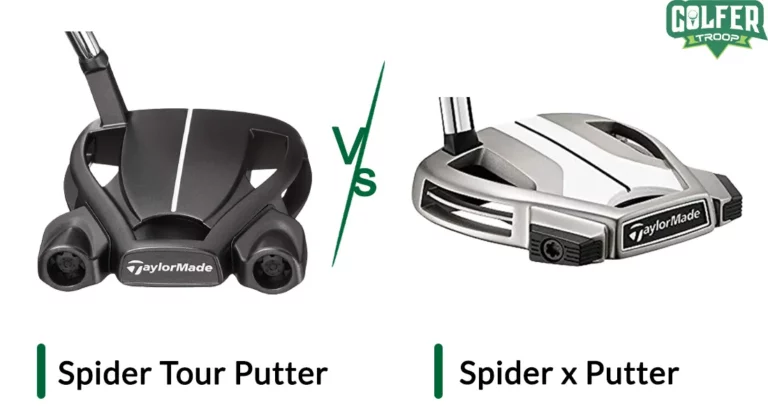
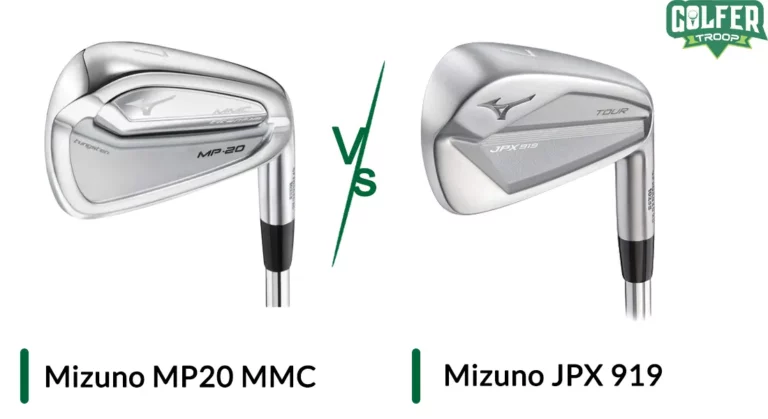
![Why Are Scotty Cameron Putters So Expensive? [Explained]](https://www.golfertroop.com/wp-content/uploads/2023/03/Why-Are-Scotty-Cameron-Putters-So-Expensive-768x419.png)